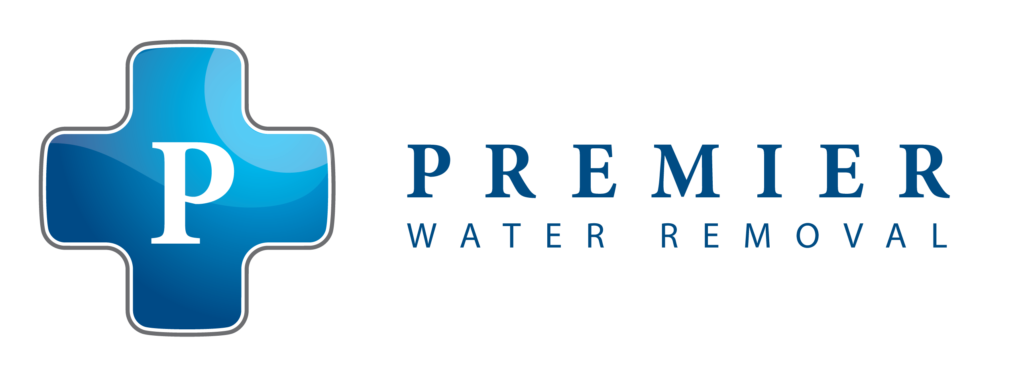When a home or business experiences water damage, one of the significant risks that follow is the potential for mold growth. Mold thrives in moist environments, which means that water-damaged properties provide an ideal breeding ground for these harmful fungi. Not only can mold growth lead to structural and cosmetic damage to your property, but it also poses health risks to those exposed, including allergy symptoms, respiratory issues, and other adverse health effects. At Premier Emergency Water Removal, we understand the critical importance of addressing mold concerns promptly and effectively, ensuring the safety and well-being of our clients and the integrity of their property.
Let’s explore the dangers associated with mold growth after water damage, discussing the health risks, common signs of mold growth, and preventative strategies homeowners and business owners can take to minimize the risk of mold infestation. We understand that dealing with mold can be a daunting and overwhelming experience. However, with the right knowledge, preventative measures, and professional assistance, you can protect your property and the health of your loved ones from the hazardous effects of mold growth. Continue reading and learn how we can help you by providing the necessary support you need to restore your home or business to a clean, safe, and mold-free environment.
Health Risks Associated with Mold Growth
Mold growth can have a significant impact on indoor air quality and can lead to various health issues for occupants. Common health risks associated with mold exposure include:
1. Allergic Reactions: Mold spores can trigger allergic reactions such as sneezing, runny nose, skin rash, and itchy eyes for sensitive individuals.
2. Respiratory Problems: Mold exposure may exacerbate existing respiratory conditions such as asthma or cause wheezing, coughing, and shortness of breath in those not previously affected.
3. Infections: Certain types of mold, such as Aspergillus species, can cause infections in individuals with weakened immune systems or chronic illnesses.
4. Toxic Effects: Some molds produce toxic substances called mycotoxins, which can lead to severe health problems, including fever, difficulty breathing, and neurological symptoms.
Recognizing the Signs of Mold Growth
Timely identification of mold growth is essential for minimizing potential health risks and property damage. Be on the lookout for these common signs:
1. Visible Mold: Look for discoloration, irregular growth patterns, or fuzzy growth on surfaces, indicating possible mold presence.
2. Musty Odor: A persistent musty smell is often a sign of hidden mold growth within walls, floorboards, or other concealed areas.
3. Water Damage: If your property has recently experienced water damage or leaks, there may be an increased risk of mold development.
4. Health Symptoms: Unexplained respiratory or allergy symptoms in occupants might indicate the presence of mold in your home or business.
Preventing Mold Growth after Water Damage
Employing these strategies can help prevent mold growth following water damage:
1. Rapid Water Extraction: Remove standing water and excess moisture as quickly as possible to limit the amount of time mold has to grow. Professional water removal services can be invaluable in this process.
2. Dehumidification and Ventilation: Utilize high-capacity dehumidifiers and maintain proper air circulation to prevent lingering moisture and encourage evaporation.
3. Thorough Drying: Make sure all affected areas, including hidden spaces like wall cavities and behind baseboards, are completely dry before beginning any repair or reconstruction work.
4. Regular Inspections: Conduct routine inspections of your property, including potential problem areas such as basements, crawl spaces, and attics, to ensure early detection and timely remediation of mold growth.
Professional Mold Remediation Solutions
If you suspect or confirm mold growth in your home or business, seeking professional mold remediation services is crucial for ensuring thorough removal and the return of a safe environment:
1. Inspection and Assessment: A mold remediation specialist will conduct a thorough inspection of your property to determine the extent of mold growth and the underlying cause of the problem.
2. Containment and Removal: The mold remediation process involves setting up containment barriers to prevent mold spores from spreading, followed by the safe and effective removal of all contaminated materials.
3. Cleaning and Sanitization: Once the mold-contaminated materials are removed, all affected surfaces are cleaned and sanitized using specialized equipment, antimicrobial solutions, and appropriate techniques.
4. Restoration and Reconstruction: After mold remediation, damaged materials often need to be replaced or repaired to restore the affected space to its original condition.
Protect Your Health: The Importance of Timely Mold RemediationConclusion
Understanding the dangers of mold growth after water damage, recognizing the signs of its presence, and taking proactive steps to address it promptly are paramount for the safety and health of your family or employees, as well as preserving the structural integrity of your property. In the event of water damage and potential mold growth, enlist the expert support of a reliable mold remediation service to guide you through the restoration process and return your property to a healthy, mold-free environment.
Trust our experienced team at Premier Emergency Water Removal for comprehensive, effective, and responsive mold remediation in Seattle and protect your property and loved ones from the adverse effects of mold growth. Our unwavering commitment to excellence, advanced equipment, and industry expertise will not only rid your home or business of mold but also provide the support and peace of mind you deserve during challenging times. Contact us today.
